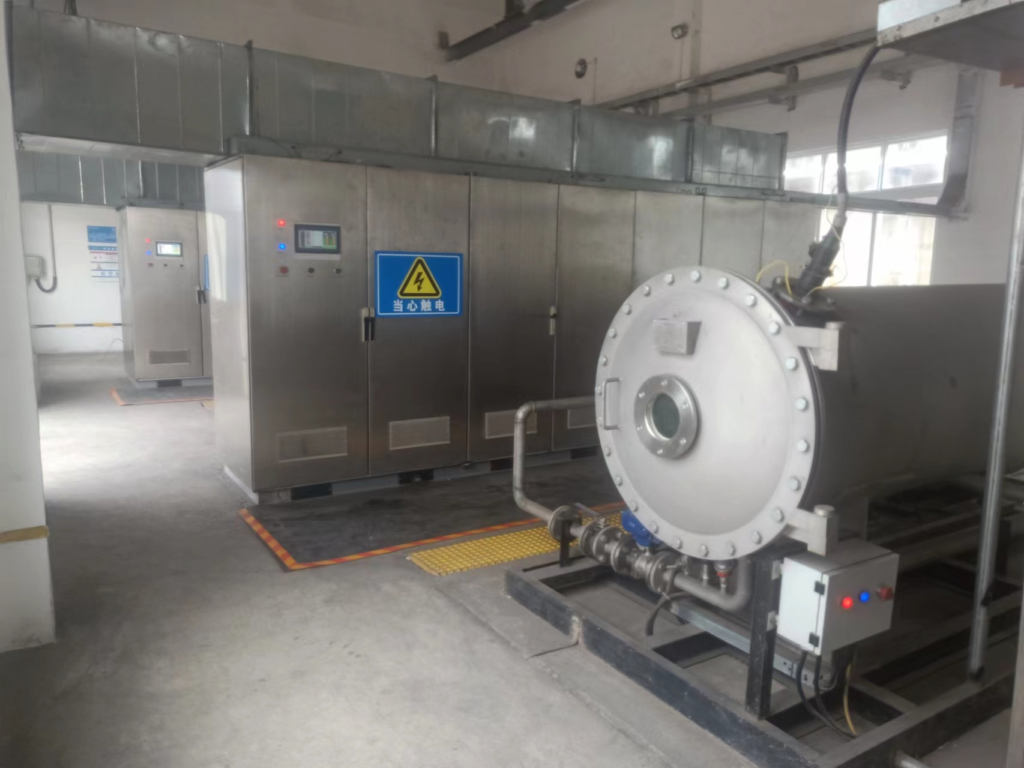MÁX. 20gerador de ozônio kg/h é usado em uma planta química de águas residuais de coque na província de Jiangsu, China. O método de oxidação do ozônio é um processo maduro e um meio eficaz para tratar águas residuais de cianeto de fenol coqueado. Pode reagir rapidamente com a maior parte da matéria orgânica nas águas residuais. Os radicais hidroxila (·OH) produzido pode oxidar completamente alguns poluentes orgânicos em CO2 , H2O, também pode oxidar e quebrar algumas cadeias longas, substâncias refratárias em pequenas moléculas de cadeia curta para melhorar a biodegradabilidade. O ozônio também pode remover o fenol, cianeto e outros poluentes em águas residuais, reduzir seu valor de DQO/DBO, aumentar o valor B/C, e melhorar a biodegradabilidade das águas residuais. Também pode desempenhar o papel de descoloração, desodorização, e esterilização, e a operação é simples e conveniente. Portanto, O método de oxidação do ozônio tem sido amplamente utilizado no tratamento de águas residuais de coqueamento.
A oxidação do ozônio é atualmente a tecnologia de oxidação avançada mais amplamente utilizada. Portanto, o processo de oxidação do ozônio é frequentemente combinado com processos bioquímicos. Atualmente, o processo mais utilizado é o “ozônio + filtro aerado biológico (O3 + BAF)” processo, e a membrana Comparada com BAF, biorreator (MBR) tem melhor função de tratamento bioquímico e efeito de separação sólido-líquido.
O método de oxidação do ozônio é usado para tratar águas residuais de coqueamento. Os resultados mostram que para a coqueificação de águas residuais com DQO <1000mg/L e fenol ≤500mg/L, a taxa de remoção de DQO após o tratamento pela oxidação do ozônio pode atingir 80%, e o teor de fenol é reduzido em mais de 80%. A taxa de remoção de cianeto de enxofre e cianeto é quase 100%, e nitrogênio amoniacal podem ser reduzidos por 35%.
O mais importante é que ao usar este 20gerador de ozônio kg/h processo, a dosagem de ozônio e o processo de correspondência são mais críticos.

 gerador máximo de ozônio
gerador máximo de ozônio
